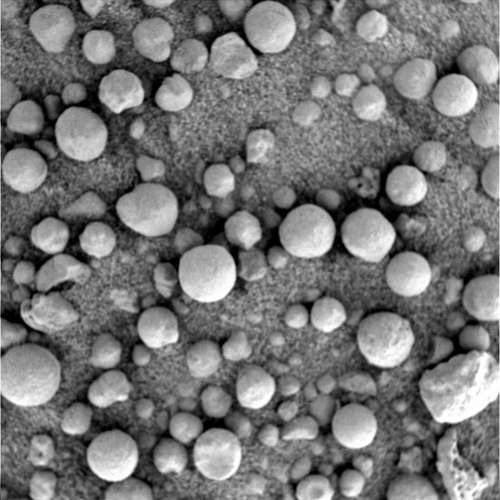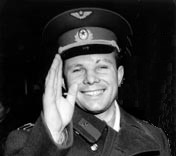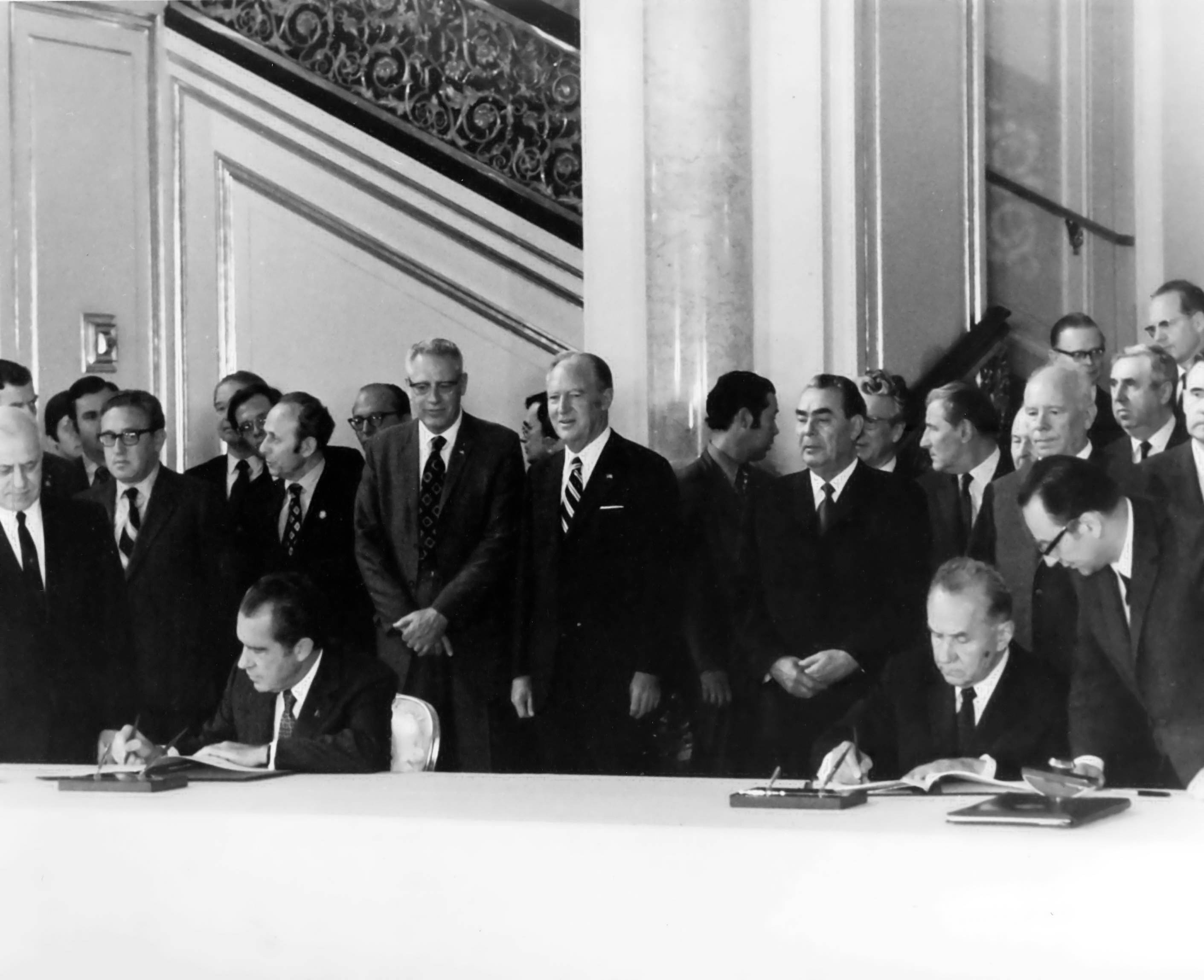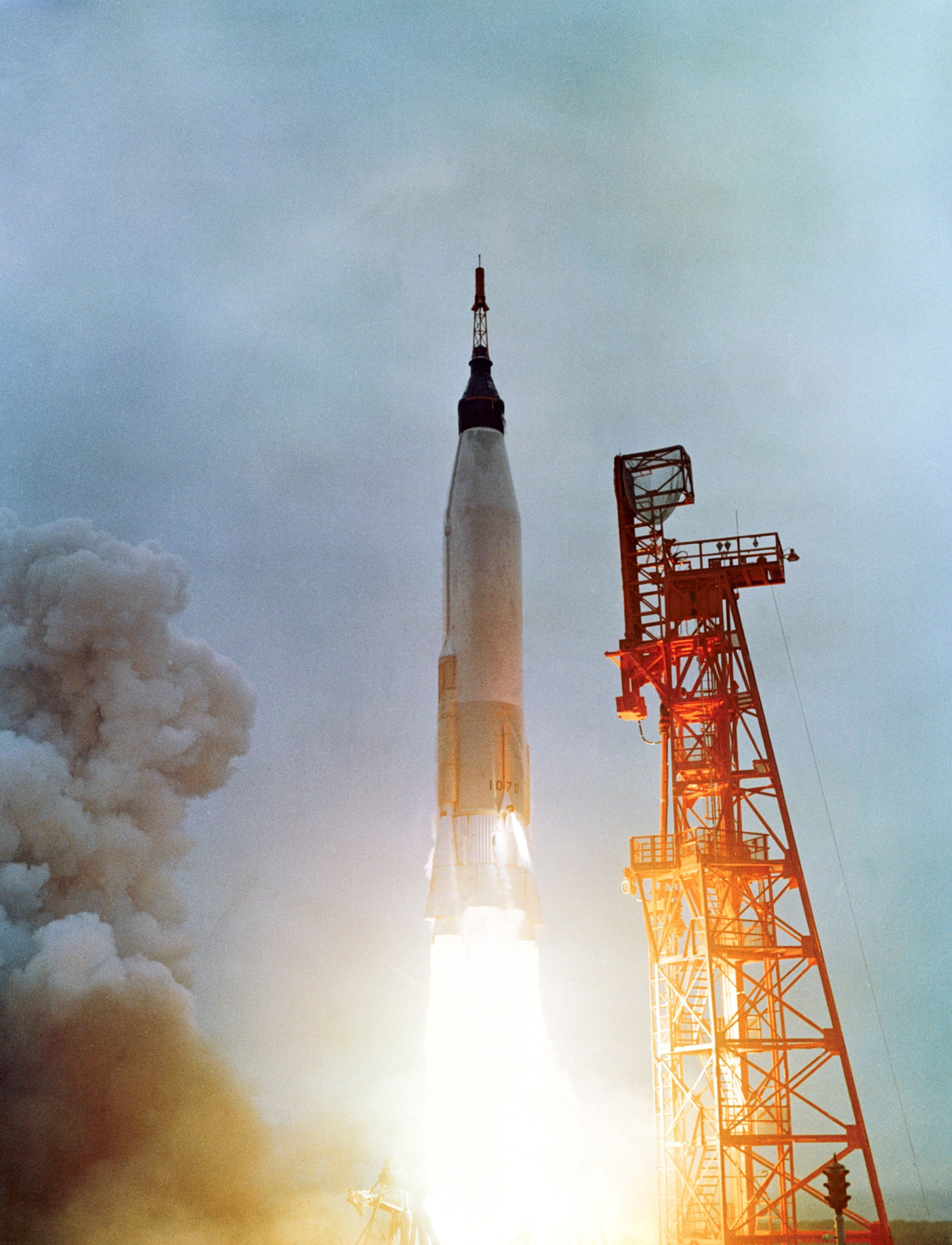|
Mercury Seven
The Mercury Seven were the group of seven astronauts selected to fly spacecraft for Project Mercury. They are also referred to as the Original Seven and Astronaut Group 1. Their names were publicly announced by NASA on April 9, 1959: Scott Carpenter, Gordon Cooper, John Glenn, Gus Grissom, Wally Schirra, Alan Shepard, and Deke Slayton. The Mercury Seven created a new profession in the United States, and established the image of the American astronaut for decades to come. All of the Mercury Seven eventually flew in space. They piloted the six spaceflights of the Mercury program that had an astronaut on board from May 1961 to May 1963, and members of the group flew on all of the NASA human spaceflight programs of the 20th centuryMercury, Gemini, Apollo, and the Space Shuttle. Shepard became the first American to enter space in 1961, and walked on the Moon on Apollo 14 in 1971. Grissom flew the first crewed Gemini mission in 1965, but died in 1967 in the Apollo 1 fire; ... [...More Info...] [...Related Items...] OR: [Wikipedia] [Google] [Baidu] |
Alan Shepard
Alan Bartlett Shepard Jr. (November 18, 1923 – July 21, 1998) was an American astronaut. In 1961, he became the second person and the first American to travel into space and, in 1971, he became the List of Apollo astronauts#Apollo astronauts who walked on the Moon, fifth and oldest person to walk on the Moon, at age 47. A graduate of the United States Naval Academy at Annapolis, Shepard saw action with the surface navy during World War II. He became a naval aviator in 1947, and a test pilot in 1950. He was selected as one of the original NASA Mercury Seven astronauts in 1959, and in May 1961 he made the first crewed Project Mercury flight, Mercury-Redstone 3, in a spacecraft he named ''Freedom 7''. His craft entered space, but was not capable of achieving orbit. He became the second person, and the first American, to travel into space. In the final stages of Project Mercury, Shepard was scheduled to pilot the Mercury-Atlas 10 (MA-10), which was planned as a three-day mi ... [...More Info...] [...Related Items...] OR: [Wikipedia] [Google] [Baidu] |
Apollo 1
Apollo 1, initially designated AS-204, was planned to be the first crewed mission of the Apollo program, the American undertaking to land the first man on the Moon. It was planned to launch on February 21, 1967, as the first low Earth orbital test of the Apollo command and service module. The mission never flew; a cabin fire during a launch rehearsal test at Cape Canaveral Air Force Station Launch Complex 34, Cape Kennedy Air Force Station Launch Complex 34 on January 27 killed all three crew members—Command Pilot Gus Grissom, Senior Pilot Ed White (astronaut), Ed White, and Pilot Roger B. Chaffee—and destroyed the command module (CM). The name Apollo 1, chosen by the crew, was made official by NASA in their honor after the fire. Immediately after the fire, NASA convened an Accident Review Board to determine the cause of the fire, and both chambers of the United States Congress conducted their own United States congressional hearing, committee inquiries to oversee NASA's in ... [...More Info...] [...Related Items...] OR: [Wikipedia] [Google] [Baidu] |
Laika
Laika ( ; , ; – 3 November 1957) was a Soviet space dog who was one of the first animals in space and the first to orbit the Earth. A stray mongrel from the streets of Moscow, she flew aboard the Sputnik 2 spacecraft, launched into low orbit on 3 November 1957. As the technology to re-enter the atmosphere had not yet been developed, Laika's survival was never expected. She died of hyperthermia hours into the flight, on the craft's fourth orbit. Little was known about the effects of spaceflight on living creatures at the time of Laika's mission, and animal flights were viewed by engineers as a necessary precursor to human missions. The experiment, which monitored Laika's vital signs, aimed to prove that a living organism could survive being launched into orbit and continue to function under conditions of weakened gravity and increased radiation, providing scientists with some of the first data on the biological effects of spaceflight. Laika's death was possibly cau ... [...More Info...] [...Related Items...] OR: [Wikipedia] [Google] [Baidu] |
Sputnik 2
Sputnik 2 (, , ''Satellite 2'', or Prosteyshiy Sputnik 2 (PS-2, , ''Simplest Satellite 2'', launched on 3 November 1957, was the second spacecraft launched into Earth orbit, and the first to carry an animal into orbit, a Soviet space dog named Laika. Launched by the Soviet Union via a modified R-7 intercontinental ballistic missile, Sputnik 2 was a cone-shaped capsule with a base diameter of that weighed around , though it was not designed to separate from the rocket core that brought it to orbit, bringing the total mass in orbit to . It contained several compartments for radio transmitters, a telemetry system, a programming unit, a regeneration and temperature-control system for the cabin, and scientific instruments. A separate sealed cabin contained the dog Laika. Though Laika died shortly after reaching orbit, Sputnik 2 marked another huge success for the Soviet Union in The Space Race, lofting huge payload for the time, sending an animal into orbit, and, for the fir ... [...More Info...] [...Related Items...] OR: [Wikipedia] [Google] [Baidu] |
Space Race
The Space Race (, ) was a 20th-century competition between the Cold War rivals, the United States and the Soviet Union, to achieve superior spaceflight capability. It had its origins in the ballistic missile-based nuclear arms race between the two nations following World War II and the onset of the Cold War. The technological advantage demonstrated by spaceflight achievement was seen as necessary for national security, particularly in regard to intercontinental ballistic missile and Reconnaissance satellite, satellite reconnaissance capability, but also became part of the cultural symbolism and ideology of the time. The Space Race brought pioneering launches of artificial satellites, robotic landers to the Moon, Venus, and Mars, and human spaceflight in low Earth orbit and ultimately to the Moon. Public interest in space travel originated in the 1951 publication of a Soviet youth magazine and was promptly picked up by US magazines. The competition began on July 30, 1955, when ... [...More Info...] [...Related Items...] OR: [Wikipedia] [Google] [Baidu] |
Cold War
The Cold War was a period of global Geopolitics, geopolitical rivalry between the United States (US) and the Soviet Union (USSR) and their respective allies, the capitalist Western Bloc and communist Eastern Bloc, which lasted from 1947 until the dissolution of the Soviet Union in 1991. The term ''Cold war (term), cold war'' is used because there was no direct fighting between the two superpowers, though each supported opposing sides in regional conflicts known as proxy wars. In addition to the struggle for ideological and economic influence and an arms race in both conventional and Nuclear arms race, nuclear weapons, the Cold War was expressed through technological rivalries such as the Space Race, espionage, propaganda campaigns, Economic sanctions, embargoes, and sports diplomacy. After the end of World War II in 1945, during which the US and USSR had been allies, the USSR installed satellite state, satellite governments in its occupied territories in Eastern Europe and N ... [...More Info...] [...Related Items...] OR: [Wikipedia] [Google] [Baidu] |
Soviet Union
The Union of Soviet Socialist Republics. (USSR), commonly known as the Soviet Union, was a List of former transcontinental countries#Since 1700, transcontinental country that spanned much of Eurasia from 1922 until Dissolution of the Soviet Union, it dissolved in 1991. During its existence, it was the list of countries and dependencies by area, largest country by area, extending across Time in Russia, eleven time zones and sharing Geography of the Soviet Union#Borders and neighbors, borders with twelve countries, and the List of countries and dependencies by population, third-most populous country. An overall successor to the Russian Empire, it was nominally organized as a federal union of Republics of the Soviet Union, national republics, the largest and most populous of which was the Russian SFSR. In practice, Government of the Soviet Union, its government and Economy of the Soviet Union, economy were Soviet-type economic planning, highly centralized. As a one-party state go ... [...More Info...] [...Related Items...] OR: [Wikipedia] [Google] [Baidu] |
Sputnik 1
Sputnik 1 (, , ''Satellite 1''), sometimes referred to as simply Sputnik, was the first artificial Earth satellite. It was launched into an elliptical low Earth orbit by the Soviet Union on 4 October 1957 as part of the Soviet space program. It sent a radio signal back to Earth for three weeks before its three silver-zinc batteries became depleted. Aerodynamic drag caused it to fall back into the atmosphere on 4 January 1958. It was a polished metal sphere in diameter with four external radio antennas to broadcast radio pulses. Its radio signal was easily detectable by amateur radio operators, and the 65° orbital inclination made its flight path cover virtually the entire inhabited Earth. The satellite's success was unanticipated by the United States. This precipitated the American Sputnik crisis and triggered the Space Race. The launch was the beginning of a new era of political, military, technological, and scientific developments. The word ''sputnik'' is Russian for ... [...More Info...] [...Related Items...] OR: [Wikipedia] [Google] [Baidu] |
List Of Spaceflight Records
Records and firsts in spaceflight are broadly divided into crewed and uncrewed categories. Records involving animal spaceflight have also been noted in earlier experimental flights, typically to establish the feasibility of sending humans to outer space. The notion of "firsts" in spaceflight follows a long tradition of firsts in aviation, but is also closely tied to the Space Race. During the 1950s and 1960s, the Soviet Union and the United States competed to be the first countries to accomplish various feats. In 1957, the Soviet Union launched Sputnik 1, the first artificial orbital satellite. In 1961, Soviet Vostok 1 cosmonaut Yuri Gagarin became the first person to enter space and orbit the Earth, and in 1969 American Apollo 11 astronaut Neil Armstrong became the first person to set foot on the Moon. No human has traveled beyond low Earth orbit since 1972, when the Apollo program ended. During the 1970s, the Soviet Union directed its energies to human habitation of sp ... [...More Info...] [...Related Items...] OR: [Wikipedia] [Google] [Baidu] |
Apollo–Soyuz Test Project
Apollo–Soyuz was the first crewed international space mission, carried out jointly by the United States and the Soviet Union in July 1975. Millions of people around the world watched on television as an American Apollo spacecraft docked with a Soviet Soyuz capsule. The project, and its "handshake" in space, was a symbol of détente between the two superpowers amid the Cold War. The Americans officially called the mission the Apollo–Soyuz Test Project (ASTP) while the Soviets called it Experimental flight "Soyuz"–"Apollo" () and Soyuz 19. The unnumbered American spacecraft was left over from canceled Apollo missions and was the last Apollo module to fly. The mission consisted of three American astronauts ( Thomas P. Stafford, Vance D. Brand, and Deke Slayton) and two Soviet cosmonauts ( Alexei Leonov and Valery Kubasov) who performed both joint and separate scientific experiments, including an arranged eclipse of the Sun by the Apollo module to allow instruments on ... [...More Info...] [...Related Items...] OR: [Wikipedia] [Google] [Baidu] |
Atrial Fibrillation
Atrial fibrillation (AF, AFib or A-fib) is an Heart arrhythmia, abnormal heart rhythm (arrhythmia) characterized by fibrillation, rapid and irregular beating of the Atrium (heart), atrial chambers of the heart. It often begins as short periods of abnormal cardiac cycle, beating, which become longer or continuous over time. It may also start as other forms of arrhythmia such as atrial flutter that then transform into AF. Episodes can be asymptomatic. Symptomatic episodes may involve heart palpitations, syncope (medicine), fainting, Presyncope, lightheadedness, Unconsciousness, loss of consciousness, or shortness of breath. Atrial fibrillation is associated with an increased risk of heart failure, dementia, and stroke. It is a type of supraventricular tachycardia. Atrial fibrillation frequently results from bursts of tachycardia that originate in muscle bundles extending from the Atrium (heart), atrium to the pulmonary veins. Pulmonary vein isolation by catheter ablation, trans ... [...More Info...] [...Related Items...] OR: [Wikipedia] [Google] [Baidu] |
Mercury-Atlas 7
Mercury-Atlas 7, launched May 24, 1962, was the fourth crewed flight of Project Mercury. The spacecraft, named ''Aurora 7'', was piloted by astronaut Scott Carpenter. He was the sixth human to fly in space. The mission used Mercury spacecraft No. 18 and Atlas launch vehicle No. 107-D. The flight was for three Earth orbits, essentially a repeat of John Glenn's Mercury-Atlas 6. However, a targeting error during reentry took the spacecraft off-course, delaying recovery of Carpenter and the spacecraft for an hour. Carpenter was held responsible, at least in part, for the landing error. Carpenter left NASA for the Navy SEALAB program in 1964. Pilot The original pilot selected for Mercury Atlas-7 was to have been Deke Slayton, with Schirra as his back-up. However Slayton was removed from flight status after the discovery of cardiac dysrhythmia during a training run in the ''g''-loading centrifuge. Slayton had chosen the name ''Delta 7'' for the spacecraft, as this would have been t ... [...More Info...] [...Related Items...] OR: [Wikipedia] [Google] [Baidu] |









